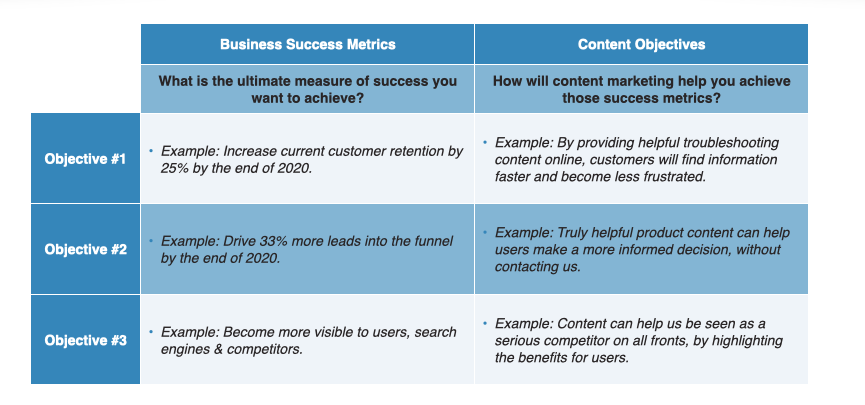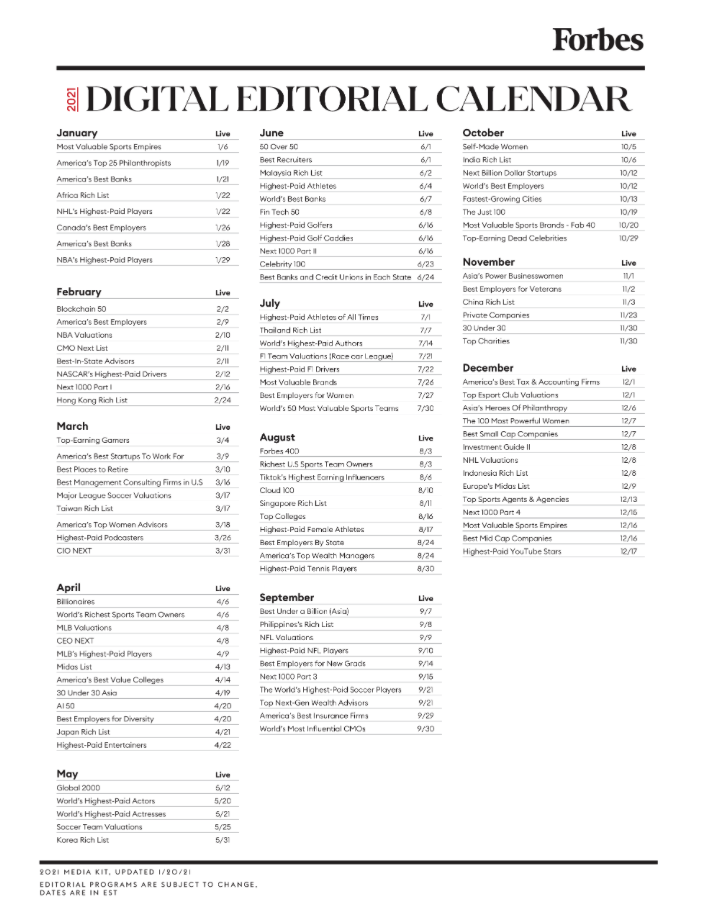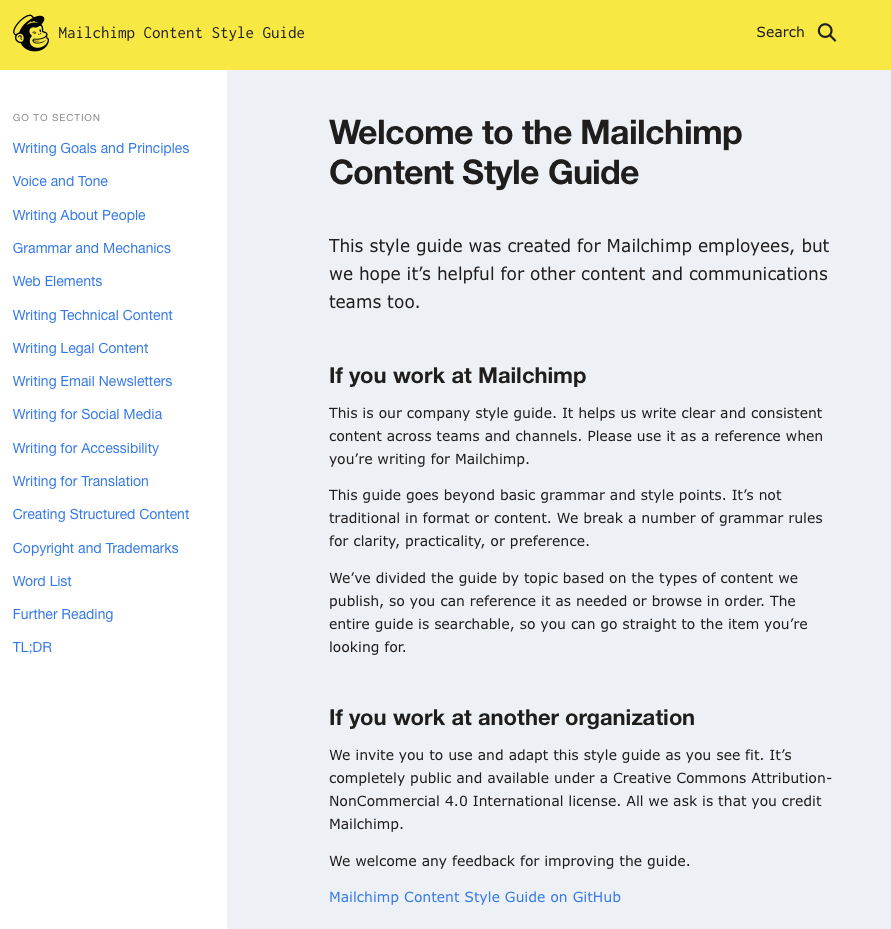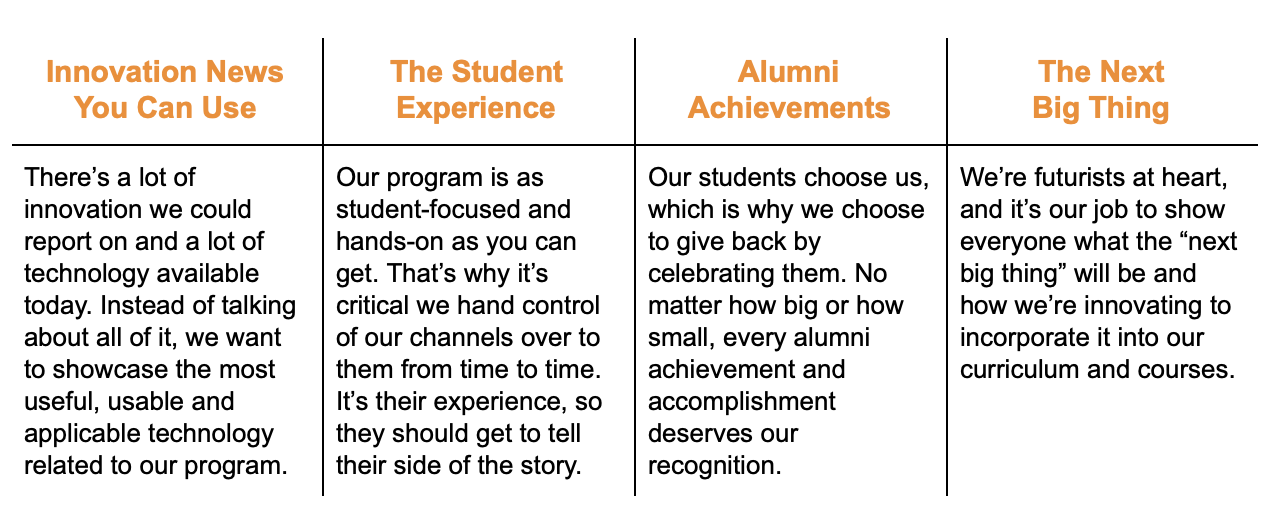When we talk about creating content, we have a tendency to talk a lot about creativity. Like, just because writers are right-brained thinkers or seen as “creative types,” all content created will be magically on brand and perform to our standards.
Except there’s just one problem: when there’s no direction provided and the content creation process isn’t documented, you’re really just hoping everyone understands which direction to go. What actually happens? Right or wrong, everyone will just go the direction they think they should go.
To avoid this common content creation trap, all you have to do is better document your content creation process, and we have several tips on how you can do just that.
1. Make the Process Clear, Simple, and Accessible
Take a look at your content creation process. Can you explain it in just a few steps, or does it require elaborate flowcharts and long RACI matrices? Unfortunately, If you can’t explain to your team of writers or content contributors how to easily jump into your processes, they won’t.
Instead of requiring others to conform to unnecessarily complex systems, take a look at your process and see what you can do to simplify or clarify the steps. It’s not always the easiest or most enjoyable content task to tackle, but it is one that will only benefit everyone in the long run.
Once you clarify your process, make sure a well-written, reader-friendly guide is available in an easy-to-access place. We’re huge fans of Google Docs, but you should also have the link available in your project management system, kickoff documents, and creative briefs. Basically, share it everywhere anyone could ever need it.
2. Define Your Business Success Metrics and Content Objectives
Creating content for the sake of creating content is never a good idea. You’ll just end up with a mountain of underperforming and expensive content.
Instead, clearly articulate what business goals you’re trying to achieve and how content objectives tie back to them. Even just a super simple chart of business success metrics and content objectives can help give everyone an idea of why they’re creating content in the first place.

And just remember: clearly articulating what you want to achieve with your content efforts doesn’t mean that your content can’t still be Youtility-based, as seen in the examples above.
3. Use an Editorial Calendar
While you probably don’t want to release your nitty gritty, detail-laden content calendar (which we just happen to have a helpful blog post and free template for), you can still give people an idea of what content you’re looking for with an editorial calendar.
Editorial calendars are most often used by magazines to give a 50,000-foot view into upcoming themes and topics that will be covered. Forbes has a fantastic example with their 2021 digital editorial calendar.

By clearly laying out the upcoming opportunities and tying them to specific dates, you will get far better content ideas and submissions because people will be able to select content pieces they actually want to write about. This also helps relieve some of the burden of assigning content.
4. Document Your Brand Guidelines
You may be seeing a pattern here. Making resources about your organization’s content creation accessible (and easy to understand!) makes the process smoother for everyone.
Why? Because some people have decided that the Oxford comma is the hill they want to die on. Or maybe someone’s writing style is whimsical and breezy when your brand is direct and to-the-point. Brand guidelines magically turn personal preference and style into moot points, because everyone now has a clear set of guidelines to follow if they want to contribute.

Ultimately, brand guidelines are about protecting your brand and making sure content meets the specific quality and style you need. Just be sure to make them clear and easy to understand.
5. Identify Content Focus Areas
Instead of giving content creators carte blanche to write about whatever they want, whenever they want, give them a few constraints by giving them your content focus areas.
You can do this by identifying major content pillars (aka content categories) that you want to cover, and then explaining exactly how those pillars come to life for your brand or organization.
For example, say you’re an engineering college at a large state university. Your content pillars might look something like this:

These pillars should have just enough detail to give everyone a clear understanding of what topics you’ll cover and how, but not be so narrowly defined that writers can’t ideate around the areas of focus.
6. Clearly Write Out Your Rejection or Objections
It’s time to expand our vocabulary. But don’t worry, we’re not dictionary-crunching. Instead, let’s talk about adopting a single word often left out of the content process: No.
The best trick? Your rejection doesn’t have to be spelled “n-o.” It can be expressed in much more palatable ways, especially in written form:
“Our calendar is full for the month, but let’s touch base again in a few weeks.”
“Our analytics show this type of content works better when [insert fact here]. Can you revise your draft to include that approach?”
“This content doesn’t align with our current content goals. Let’s brainstorm something that better supports our established content plan.”
It can be tough to say no, especially when content can seem subjective at times, but offer specific feedback that reinforces best practices and arms you to be an effective gatekeeper to control content. And document that feedback, too.
7. Publicly Praise Success
It’s important to celebrate your team’s successes—and to do it publicly. When people see great work rewarded, they are more motivated to follow suit. Plus, it gives them an idea of what on-brand and on-target content really looks like.
But don’t stop at a simple pat on the back. Take the time to share some insight into what you believe caused that piece of content to go above and beyond. This turns the moment into a learning opportunity for the entire team and reinforces best practices.
You can use a company-wide meeting or email to give a shout-out to the most popular blog posts for the month, or share it out on social media and tag the creator. Either way, always give credit where credit is due. That’s one best practice that never goes out of style.
Better Document Your Process to Get Better Content
A robust content creation system can easily go haywire. There are a ton of pieces that all have to come together, and they’re all constantly in motion. But there is a lot you can do to reel your team back in from the edge of mayhem. Whether you apply one of these documentation tips or all of them, you’re on your way back to an organized, well-oiled machine.
This post was originally written by Emily Wenstrom in 2017, and extensively updated by Anna Hrach, Digital Strategist here at Convince & Convert, in 2021.
The post How to Get Better Content by Documenting Your Content Creation Process appeared first on Content Marketing Consulting and Social Media Strategy.




